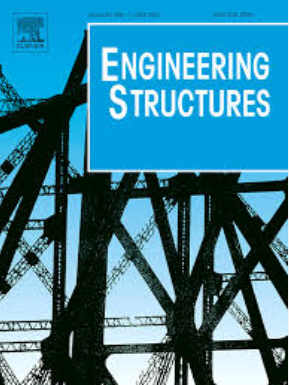3D-printed functionally graded concrete plates: Concept and bending behavior
IF 5.6
1区 工程技术
Q1 ENGINEERING, CIVIL
引用次数: 0
Abstract
Three-dimensional concrete printing (3DCP), as an innovative technology, has become increasingly popular owing to advantages such as cost-effectiveness, labor-saving, free of formwork and materials-saving. Using the layer-by-layer construction technique enabled by 3DCP, functionally graded concretes with different ultimate tensile strain (UTS) capacities are proposed in this paper, leading to an optimum design of concrete plates. Three types of concrete, which are designed to have different UTS capacities, namely engineering cementitious composites (ECC), normal concrete (NC) and gepolymer concrete (GC), are developed. Six groups of 3D-printed functionally graded concrete plates are fabricated and tested under bending. The results revealed that the load-bearing capacity of FGC-3–2–1 was comparable to that of ECC plates, while FGC-1–2–3 exhibited the lowest load-bearing and deformation capacities. Increasing the number of ECC layers enhanced both the load-bearing and deformation capacities. Conversely, changing the number of GC and NC layers when the number of ECC layers remained constant resulted in similar performance. Additionally, using ECC as a reinforcing layer for 3D-printed concrete structures significantly improved their load-bearing and deformation capacities. These findings suggest that the proper design of functionally graded concrete can substantially reduce the CO2 of concrete plates without compromising their mechanical properties. Finally, a theoretical model based on bond-slip laws was proposed and validated against the test results, providing valuable insights for the design and optimization of 3D-printed concrete structures.
求助全文
约1分钟内获得全文
求助全文
来源期刊

Engineering Structures
工程技术-工程:土木
CiteScore
10.20
自引率
14.50%
发文量
1385
审稿时长
67 days
期刊介绍:
Engineering Structures provides a forum for a broad blend of scientific and technical papers to reflect the evolving needs of the structural engineering and structural mechanics communities. Particularly welcome are contributions dealing with applications of structural engineering and mechanics principles in all areas of technology. The journal aspires to a broad and integrated coverage of the effects of dynamic loadings and of the modelling techniques whereby the structural response to these loadings may be computed.
The scope of Engineering Structures encompasses, but is not restricted to, the following areas: infrastructure engineering; earthquake engineering; structure-fluid-soil interaction; wind engineering; fire engineering; blast engineering; structural reliability/stability; life assessment/integrity; structural health monitoring; multi-hazard engineering; structural dynamics; optimization; expert systems; experimental modelling; performance-based design; multiscale analysis; value engineering.
Topics of interest include: tall buildings; innovative structures; environmentally responsive structures; bridges; stadiums; commercial and public buildings; transmission towers; television and telecommunication masts; foldable structures; cooling towers; plates and shells; suspension structures; protective structures; smart structures; nuclear reactors; dams; pressure vessels; pipelines; tunnels.
Engineering Structures also publishes review articles, short communications and discussions, book reviews, and a diary on international events related to any aspect of structural engineering.
 求助内容:
求助内容: 应助结果提醒方式:
应助结果提醒方式:


